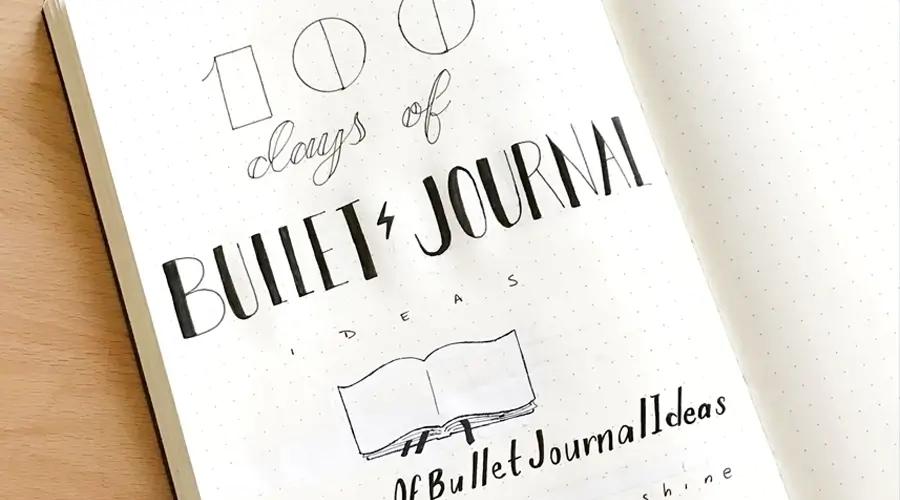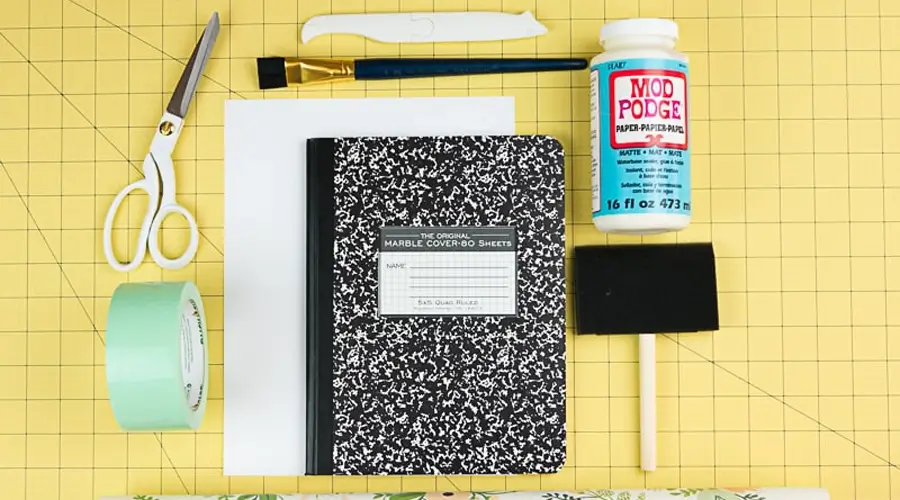In a world that constantly moves faster, journaling offers a unique opportunity to slow down and connect with yourself. It’s not just about writing on paper—it’s a powerful tool for self-expression, mental clarity, and personal growth. Whether you’re seeking to document your thoughts, track your progress, or explore your creativity, journaling provides a safe space for reflection. It acts as a mirror, helping you understand your emotions, challenges, and dreams more deeply.
Why Choosing the Right Journal Matters
The journal you choose plays a pivotal role in shaping your journaling experience. A journal that aligns with your needs and preferences makes it easier to stay consistent and engaged in the practice. Choosing the wrong one, on the other hand, can feel like forcing yourself into something that doesn’t quite fit, which can lead to frustration or abandoning the habit altogether. The right journal supports your goals, whether it’s boosting creativity, organizing tasks, or focusing on mental health.
A Brief Overview of the Different Types of Journals Available Today
Today, journaling is a broad and diverse practice. There’s no one-size-fits-all approach, and that’s why there are so many types of journals available. From the classic lined notebook to creative bullet journals, each type offers something different to suit various needs. If you’re looking to track your goals, a bullet journal might be the perfect choice. If you want to focus on gratitude or mental well-being, a gratitude journal could help cultivate a positive mindset. For those with a passion for creative expression, a creative writing journal offers a space to let imagination flow. Understanding the different types of journals will help you choose the one that best aligns with your personal goals, preferences, and journaling style.
Know Your Purpose: Why Are You Journaling?
Before you start your journaling journey, it’s important to understand your purpose. Why do you want to journal? The reason behind your journaling practice will guide the type of journal you choose and how you use it. Different types of journals serve different needs, and knowing your purpose can help you find the right fit for your goals.
Personal Growth Journals: The Quest for Self-Awareness and Improvement
If you’re looking to improve yourself, build emotional intelligence, or reflect on your personal journey, a personal growth journal might be the perfect choice. These journals are designed to help you track your progress, identify areas for improvement, and deepen your self-awareness. They often include prompts for reflection, setting goals, and measuring personal growth, making them an ideal tool for anyone seeking continuous improvement in their life.
Creative Writing Journals: Exploring Creativity Through Writing
For those with a passion for writing and creative expression, a creative writing journal provides a dedicated space to let your imagination run wild. Whether you enjoy writing short stories, poetry, or even journaling free thoughts, this type of journal helps to stimulate creativity and unlock new ideas. Creative journaling often allows you to explore different writing styles, experiment with characters and plotlines, or simply write down anything that comes to mind, without the pressure of perfection.
Gratitude Journals: Focusing on Positivity and Appreciation
A gratitude journal is all about shifting your focus towards the positive aspects of life. By writing down things you are grateful for each day, you cultivate a mindset of appreciation and positivity. This type of journaling has been shown to improve mental health, reduce stress, and increase happiness. Whether it’s big milestones or small, everyday moments, a gratitude journal encourages you to reflect on the things that make your life meaningful and joyful.
Bullet Journals: Organizing Life, Tasks, and Goals
If you struggle with staying organized or find yourself overwhelmed with tasks and deadlines, a bullet journal might be your solution. This type of journal is a hybrid of a planner, task manager, and personal diary. It allows you to organize your life by creating daily to-do lists, monthly goals, habit trackers, and even space for free-writing. With its flexible layout, you can customize it to suit your specific needs, whether it’s tracking work tasks, personal goals, or long-term dreams.

Wellness Journals: Mental and Physical Well-Being Tracking
For those interested in improving both their physical and mental health, a wellness journal provides a dedicated space to track various aspects of well-being. This might include daily moods, exercise routines, eating habits, sleep patterns, and stress levels. Wellness journaling helps you gain insight into your health, identify patterns, and stay motivated to live a balanced life. It’s a great way to track progress, set health goals, and reflect on your overall well-being.
Understanding your purpose for journaling will help you choose the journal that best aligns with your goals, whether it’s personal growth, creative expression, gratitude, organization, or well-being. Each type of journal serves a unique function, and identifying your primary goal will make your journaling practice more meaningful and impactful.
Choosing the Right Journal Type for Your Needs
When it comes to journaling, choosing the right type of journal is crucial to ensure that your writing experience aligns with your goals and preferences. Here are some essential aspects to consider when selecting the perfect journal for your needs.
The Importance of the Format: Lined, Unlined, Dotted, or Grid Pages
The format of the pages plays a significant role in how you use your journal. Lined pages are ideal for those who prefer structure in their writing, making it easier to stay organized and focused. If you’re looking for more freedom to express yourself, unlined pages offer a blank canvas for creative exploration, sketches, or free-form writing. Dotted pages are a happy medium, providing a subtle guide for those who want to maintain a balance between structure and creativity. Grid pages are perfect for those who need precision, whether it’s for making charts, organizing lists, or planning layouts. The format should suit your personal journaling style and how you intend to use your journal.
The Role of Size: Pocket-Sized for On-the-Go or Large Formats for Detailed Entries
The size of your journal plays an essential role in how convenient and comfortable it is to use. A pocket-sized journal is portable, making it perfect for those who want to carry it everywhere and jot down thoughts on the go. It’s ideal for quick reflections or brief notes during your daily life. On the other hand, larger formats are great for those who need more space for detailed entries, creative writing, or thoughtful reflections. If you prefer to write in-depth or need room for sketches and mind maps, a larger journal will suit you better. The size should match your lifestyle and how you plan to use your journaling practice.
Personal Preferences: Color, Design, and Layout That Speak to Your Personality
A journal is a deeply personal tool, and its color, design, and layout should resonate with you. Whether you enjoy minimalist designs, vibrant patterns, or sleek, elegant styles, the visual appeal of your journal can influence how motivated you feel to write in it. Choose a journal that reflects your personality and style, as this will encourage you to use it consistently and joyfully. The design can also affect the overall mood of your journaling practice, so pick one that makes you excited to open it and start writing.
Digital Journal or Paper: Customization in Digital Journals
While traditional paper journals have their charm, digital journals are gaining popularity for their convenience and flexibility. A digital journal offers the benefit of customization, allowing you to adjust the layout, colors, and even incorporate multimedia like images and links. You can organize your thoughts, set reminders, or even access your journal on the go, making it a practical choice for those who prefer a more tech-savvy approach to journaling. Whether you choose to write digitally or stick with a paper journal, it’s important to select the format that best supports your needs, preferences, and goals.
Choosing the right journal type is all about understanding your needs and finding a tool that complements your journaling style. By considering factors like format, size, personal preferences, and whether you opt for a paper or digital journal, you can ensure that your journaling practice remains consistent, enjoyable, and effective.
Unlock your creativity and boost your productivity with AI-powered journaling on VERBOAI.
The Power of Customization: Make It Your Own
Customization adds a personal touch to your journaling practice, making it not just a tool for writing but an extension of your identity. Personalizing your journal allows you to create a space that truly resonates with you, fostering a deeper connection to the act of journaling itself.
Personalized Journals: Adding Your Unique Touch with Stickers, Quotes, and Artwork
One of the best ways to make your journal feel like yours is through personalization. You can add stickers, inspiring quotes, or even your own artwork to the pages. These creative touches bring your journal to life and transform it into a visual representation of your personality. This customization process turns the journaling experience into something unique, ensuring that each time you open your journal, you feel a sense of ownership and joy.

Why Customizing a Journal Can Enhance Your Experience and Deepen Your Connection to the Practice
Customizing your journal is more than just a fun activity – it can enhance your journaling experience in profound ways. By making your journal a reflection of your personal style, you create a space where you feel comfortable and inspired to write. This deepens your connection to the practice, allowing for more honest and meaningful entries. The process of customization itself can be therapeutic, helping you slow down and connect with your thoughts and emotions on a deeper level.
The Mental Health Benefits of Creating a Visually Pleasing and Emotionally Resonant Space
There are significant mental health benefits to creating a journal that is visually pleasing and emotionally resonant. A personalized journal can serve as a safe space where you express your thoughts, release stress, and reflect on your emotions. When your journal is a place that visually resonates with you, it becomes more inviting, which can encourage consistent use. This consistency helps foster mindfulness, improves emotional regulation, and can even contribute to a sense of calm and clarity.
Reflect on Your Lifestyle: Which Journal Fits Your Routine?
The practice of journaling should feel natural and align with your schedule. Whether you have the time for a consistent daily habit or need more flexibility, choosing the right journal will make all the difference in ensuring the practice feels effortless and fulfilling.
Do You Have the Time to Maintain a Daily Journaling Practice, or Would a More Flexible Schedule Suit You Better?
First, ask yourself how much time you can realistically dedicate to journaling each day. If you’re someone who thrives on routine, you might prefer a structured journal that encourages daily reflections and goals. However, if you have a more fluid schedule, a less rigid journaling practice that allows for flexibility might be a better fit. Whether it’s a quick note on your thoughts or a long reflection, your journal should adapt to your pace, not the other way around.
Journals for Different Routines: Quick Reflections vs. Deep, Long-Form Entries
The type of journal you choose should also align with the depth of your journaling. If your routine involves quick check-ins, a journal with simple prompts or short daily reflections may work best. These types of journals are great for capturing fleeting thoughts or setting a daily intention. On the other hand, if you prefer in-depth reflections and have more time to dedicate to journaling, a journal with larger spaces for long-form writing might be ideal. The format of your journal can complement how deeply you wish to reflect on your day, thoughts, and experiences.
How Journaling Can Complement or Enhance Your Lifestyle (Morning Routine, Evening Reflection, Travel Journaling)
Journaling can seamlessly integrate into various aspects of your lifestyle. For instance, a morning journal can help set your intentions for the day, provide motivation, or clarify your goals. Evening reflections in your journal can offer a calming way to unwind, allowing you to process the events of the day and track your progress. If you travel frequently, a travel journal can be a wonderful companion, capturing the sights, emotions, and stories from your journey. The versatility of journaling means that it can enhance and support many routines, making it an adaptable tool for both growth and self-care.
Journal Features That Can Help You Stay Motivated
Staying motivated to consistently engage in journaling can sometimes be challenging, but choosing the right features for your journal can make all the difference. Whether you prefer structure or freedom, certain elements can boost your motivation and help you make journaling a regular practice.
Guided Prompts vs. Blank Pages: Which Helps You Stay Motivated to Write Consistently?
One of the most important features of any journal is how it encourages you to write regularly. Guided prompts are a great way to stay motivated, as they provide direction and inspiration for your entries. These prompts can help you reflect on different aspects of your life, including personal growth, gratitude, and emotional well-being, making it easier to stay consistent. On the other hand, blank pages offer complete freedom, allowing you to write whatever comes to mind. While this can be liberating, it may also lead to writer’s block if you struggle with knowing where to begin. Choosing between guided prompts or blank pages depends on what keeps you motivated to write consistently.
How Certain Features (e.g., Goal-Setting Sections, Inspirational Quotes) Can Improve Consistency in Your Practice
Certain features, like goal-setting sections and inspirational quotes, can play a significant role in maintaining motivation for journaling. Goal-setting sections in your journal allow you to track your progress, set intentions, and reflect on your achievements. This can be a powerful way to stay on track and motivated, especially if you’re using journaling to work toward specific personal or professional goals. Additionally, incorporating inspirational quotes throughout your journal can provide a constant source of encouragement, helping you stay positive and focused on your practice.
Using a Journaling App Alongside Physical Journals for Hybrid Practices
If you enjoy both digital and traditional methods, you can combine the benefits of both by using a journaling app alongside your physical journal. A journaling app offers the flexibility of journaling on the go, allowing you to capture thoughts anytime, anywhere. You can use the app for quick reflections, tracking goals, or even journaling on your phone when you’re away from your physical journal. The hybrid approach combines the tactile pleasure of writing by hand with the convenience and versatility of digital tools, which can help keep you motivated to continue your journaling practice consistently.

Test and Try: Don’t Be Afraid to Experiment
Experimenting with different types of journals allows you to discover what truly resonates with you and enhances your journaling experience.
Why It’s Okay to Try Multiple Types of Journals Until You Find the One That Resonates
Don’t be afraid to explore different types of journals. You may find that what works for you today might not be the best choice tomorrow, and that’s a part of the journey. Whether you start with a gratitude journal, a bullet journal, or a creative writing journal, each type of journal offers a unique benefit. Trying different formats will help you find the one that best fits your lifestyle, emotions, and goals. The beauty of journaling lies in its versatility, and you’re free to adjust your practice as needed.
The Process of Trial and Error as Part of the Journaling Journey
Journaling is not about finding the perfect system from the start—it’s about discovering what works for you over time. The process of trial and error is an essential part of the journaling journey. You might experiment with prompts, formats, or even digital versus physical journals before you discover the method that brings the most value to your practice. Don’t be discouraged by mistakes or moments of doubt. Each experiment helps you get closer to understanding what will work best for you.
Listening to Your Emotions and Needs as You Explore Different Styles
As you explore different journaling styles, listen to your emotions and needs. If a particular type of journal feels overwhelming, try something simpler. If a format feels restrictive, experiment with more freedom. The key is to stay in tune with how you feel during your journaling practice and make adjustments when necessary. Your journaling practice should evolve with you, so don’t hesitate to change your approach as you grow.
Conclusion
When it comes to journaling, choosing the right journal is a personal journey, and it’s important to consider a few key factors. Think about your purpose for journaling, the type of journal that aligns with your routine, the features that motivate you, and the emotional connection you feel to your journal. Whether you choose a gratitude journal, a creative writing journal, or even a digital journaling app, what matters most is that the practice supports your needs and growth.
I encourage you to start journaling today and experience the many benefits for yourself. Journaling can be a powerful tool for personal growth, creativity, and mental clarity. It allows you to reflect, express, and track your progress in a meaningful way.
Remember, the perfect journal is the one that works for YOU—whether it’s a traditional paper journal or a digital one, whether it’s structured or free-flowing. There is no one-size-fits-all. Find the one that resonates with your heart, and let it become your companion on your journaling journey.



